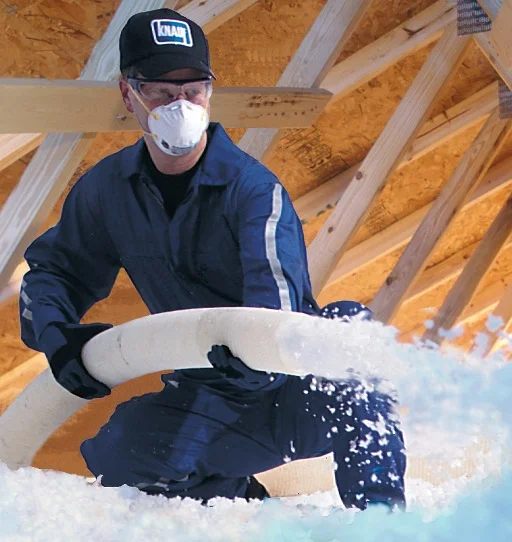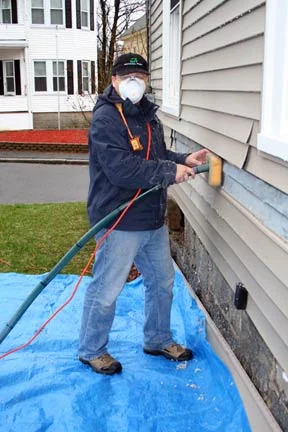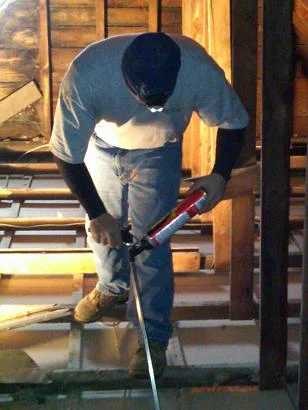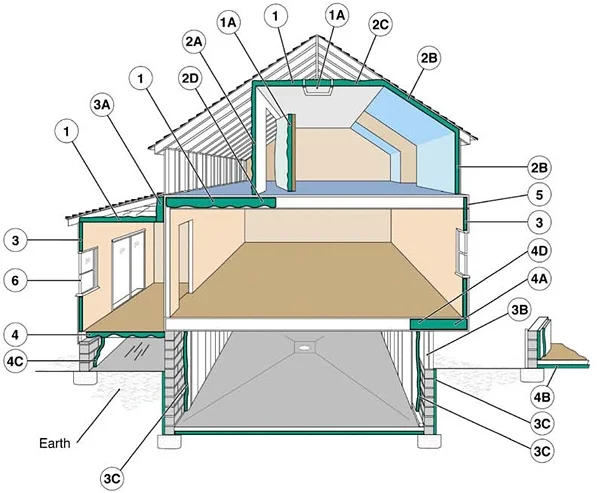Retrofit Insulation - Weatherization



Examples of where to insulate:
1. In unfinished attic spaces, insulate between and over the floor joists to seal off living spaces below. (1A) attic access door 2. In finished attic rooms with or without dormer, insulate (2A) between the studs of “knee” walls, (2B) between the studs and rafters of exterior walls and roof, (2C) and ceilings with cold spaces above. (2D) Extend insulation into joist space to reduce air flows. 3. All exterior walls, including (3A) walls between living spaces and unheated garages, shed roofs, or storage areas; (3B) foundation walls above ground level; (3C) foundation walls in heated basements, full wall either interior or exterior. 4. Floors above cold spaces, such as vented crawl spaces and unheated garages. Also insulate (4A) any portion of the floor in a room that is cantilevered beyond the exterior wall below; (4B) slab floors built directly on the ground; (4C) as an alternative to floor insulation, foundation walls of unvented crawl spaces. (4D) Extend insulation into joist space to reduce air flows. 5. Band joists. 6. Replacement or storm windows and caulk and seal around all windows and doors.
Source: Oak Ridge National Laboratory
Attic Insulation
Loose-fill or batt insulation is typically installed in an attic. Loose-fill insulation is usually less expensive to install than batt insulation and provides better coverage when installed properly. Before insulating, seal any air leaks and make roof and other necessary repairs. If it is located in a conditioned part of the house, also remember to insulate and air seal your attic access.
Insulate and air seal any knee walls — vertical walls with attic space directly behind them — in your home as well. In addition, if you’re building a new home or remodeling, make sure any attic decking that provides additional storage space or a platform for a heating and/or cooling unit or hot water tank is raised above the ceiling joists to leave room for adequate insulation. Finally, if you live in a hot or warm climate, consider installing a radiant barrier in your attic to reduce summer heat gain.
Exterior Wall Insulation
In an existing home, consider using blow-in insulation, which, when installed with the dense pack technique, will provide significant air sealing. It can be added to exterior walls without much disturbance to finished areas of your home. If you’re remodeling and your wall cavities will be open, look into two-part spray foam or cellulose insulation.
Cathedral Ceiling Insulation
Properly insulating your cathedral ceilings will allow ceiling temperatures to remain closer to room temperatures, providing an even temperature distribution throughout the house. Cathedral ceilings must provide space between the roof deck and home’s ceiling for adequate insulation and ventilation. Foil-faced batt insulation is often used in cathedral ceilings because it provides the permeability rating often required for use in ceilings without attics. A vent baffle should be installed between the insulation and the roof decking to maintain the ventilation channel. Unvented (hot roof design) cathedral ceilings are also an option. The hot roof design allows more insulation to be installed in the roof cavity as the need for a vent space is eliminated. It is important that the roof cavity be totally air sealed from the conditioned space below to prevent moisture intrusion and roof degradation.
Insulating Floors Above Unheated Garages
When insulating floors above unconditioned garages, first seal all possible sources of air leakage. This strategy has the added benefit of minimizing the danger of contaminants (from car exhaust, paint, solvents, gardening supplies, etc.) in the garage migrating into the conditioned space. Also install an air barrier to prevent cold air in the garage from “short circuiting” the insulation underneath the subfloor.
Foundation Insulation
In addition to reducing heating costs, a properly insulated foundation will keep below-grade rooms more comfortable and prevent moisture problems, insect infestation, and radon infiltration.
Basement Insulation
A properly insulated basement can save you money on heating and provide a dry, comfortable living space. In most cases, a basement with insulation installed on its exterior walls should be considered a conditioned space. Even in a house with an unconditioned basement, the basement is more connected to other living spaces than to the outside, which makes basement wall insulation preferable to ceiling insulation.
In an existing home, adding insulation to the exterior of the basement walls is impractical. Interior basement wall insulation has the following advantages:
- It is much less expensive to install than exterior insulation for existing buildings.
- Almost any insulation type can be used.
- It eliminates the threat of insect infestation.
Here are a few things to consider when installing interior basement wall insulation:
- Many insulation types require a fire-rated covering because they release toxic gases when ignited.
- Interior insulation reduces usable interior space by a few inches.
- It doesn’t protect the damp-proof coating like exterior insulation does.
- If perimeter drainage is poor, the insulation may become saturated by moisture weeping through foundation walls.
- Superior air-sealing details and vapor diffusion retarders are important for adequate performance.
Moisture control is particularly important for basements, because they are notorious for problems with water intrusion, humidity, and mold.
Crawlspace Insulation
How you insulate a crawlspace depends on whether it’s ventilated or unventilated. Most building codes require vents to aid in removing moisture from the crawlspace. However, many building professionals now recognize that building an unventilated crawlspace (or closing vents after the crawlspace dries out following construction) is the best option in homes using proper moisture control and exterior drainage techniques.
If you have or will have an unventilated crawlspace, the best approach is to seal and insulate the foundation walls rather than the floor between the crawlspace and the house. This strategy has the advantage of keeping piping and ductwork within the conditioned volume of the house so these building components don’t require insulation for energy efficiency or protection against freezing. The downside of this strategy is that rodents, pests, or water can damage the insulation and the crawlspace must be built airtight and the air barrier maintained. It’s best to locate the access door to the crawlspace inside the home through the subfloor unless you build and maintain an airtight, insulated access door in the perimeter wall.
Air Duct Insulation
If the ducts in your home are in unconditioned space, seal and insulate them. If you’re building a new house, place ducts in the conditioned space to avoid the energy losses associated with most duct systems.

